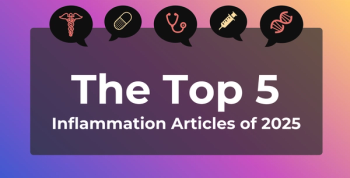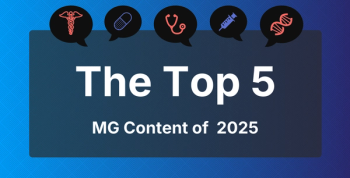
ACA Premiums Set for Significant Jumps in 2026, Threatening Affordability
Key Takeaways
- ACA marketplace premiums are projected to increase by a median of 18% in 2026, the largest since 2018.
- The expiration of enhanced premium tax credits could lead to a 75% increase in out-of-pocket premiums for enrollees.
Proposed Affordable Care Act (ACA) premium hikes threaten health care access, with potential increases of over 75% for enrollees.
Proposed increases in Affordable Care Act (ACA) marketplace premiums could pose significant challenges to health care access and affordability for 2026, according to a Peterson-KFF analysis.1
The analysis, which reviewed rate filings from 312 insurers across 50 states and the District of Columbia, indicates a median proposed premium increase of 18%, with the average increase around 20%. This represents an 11–percentage-point jump compared with the median proposed rate increase of 7% in 2025. This is the largest rate change insurers have requested since 2018.
A major factor influencing these projections is the looming expiration of enhanced premium tax credits at the end of 2025, unless Congress acts to extend them.2 These subsidies, extended by the Inflation Reduction Act (IRA), previously reduced premium payments by an average of 44%, or $705 annually, for enrollees receiving tax credits. Insurers are largely assuming these enhanced subsidies will expire, a factor that alone is driving rates an average of 4 percentage points higher.1
The expectation is that if subsidies decrease, healthier members will disproportionately leave the ACA marketplaces due to higher postsubsidy premiums, creating an enrollee base that is less healthy and more expensive.1,3 This anticipated shift in the risk pool further contributes to the higher premiums being requested.3 Beyond policy, rising health care costs remain a fundamental driver, including increasing prices for medical services, higher utilization, and the growing expense of high-cost prescription drugs, particularly glucagon-like peptide-1
ACA Premium Impact on Patients in 2026
If the enhanced subsidies are not extended, the implications for patients could be severe. Almost all ACA marketplace enrollees will experience steep increases in premium payments in 2026.1 The Peterson-KFF analysis indicated that the expiration of enhanced tax credits could lead to out-of-pocket premiums for ACA marketplace enrollees increasing by an average of more than 75%. For some, costs could double or more, especially for subsidized enrollees in 12 states relying on Healthcare.gov.4 For instance, if a patient paid $60 a month for their health insurance this year, they might need to pay $105 a month next year.
This substantial increase in costs is projected to have a direct impact on health care access. The Congressional Budget Office (CBO) estimated that letting subsidies expire would increase the number of uninsured by 4.2 million people over the next decade.5 When combined with other federal policy changes, the CBO further projected that 8.2 million people who currently have ACA insurance could become uninsured over the next decade. This could reverse the recent trend of record-high enrollment in ACA plans and the lowest uninsured rate ever.
Additionally, the departure of healthier individuals will likely lead to a sicker and costlier insurance pool, perpetuating a cycle of rising premiums for those who remain. The financial burden will fall heavily on those with chronic conditions or expensive medications, who cannot afford to go without insurance.
Recent ACA Enrollment Details
Despite the looming challenges, the ACA marketplace has recently achieved historic enrollment milestones. For the 2025 marketplace open enrollment period, 23.6 million consumers selected affordable health care plans through the ACA marketplaces. This record enrollment has been significantly fueled by expanded financial assistance and the IRA, which allowed many consumers to access quality coverage for as low as $10 per month.
Since 2020, following the implementation of enhanced subsidies, plan enrollment among low-income individuals (earning up to 2.5 times the federal poverty level) has surged by 115%. The subsidies played a crucial role in making coverage more accessible by significantly reducing the barrier of high costs. In 2020, then–HHS Secretary Xavier Becerra stated that the ACA has proven successful and critically important for millions of Americans, standing alongside Medicare, Medicaid, and Social Security as one of the most consequential social programs in the nation's history. However, even with this progress, millions of Americans still face critical gaps in access to and affordability of health care.
While recent years have seen remarkable gains in coverage and affordability, the projected premium increases in 2026, driven largely by federal policy choices, threaten to roll back this progress, underscoring the urgency of congressional action to maintain these vital subsidies.
References
1. Ortaliza J, McGough M, Vu K, et al. How much and why ACA marketplace premiums are going up in 2026. Peterson-KFF Health System Tracker. August 6, 2025. Accessed August 12, 2025.
2. Steinzor P. 24 million consumers choose ACA coverage, enrollment still open. AJMC®. January 8, 2025. Accessed August 12, 2025.
3. Simmons-Duffin S. ACA health insurance will cost the average person 75% more next year, research shows. NPR. July 18, 2025. Accessed August 12, 2025.
4. Santoro C. ACA impact on Medicare beneficiaries linked to reduced costs, improved health. AJMC. January 17, 2025. Accessed August 12, 2025.
5. Ortaliza J, McGough M, Cox C, et al. How will the One Big Beautiful Bill Act affect the ACA, Medicaid, and the uninsured rate? KFF. June 18, 2025. Accessed August 12, 2025.
Newsletter
Stay ahead of policy, cost, and value—subscribe to AJMC for expert insights at the intersection of clinical care and health economics.







































